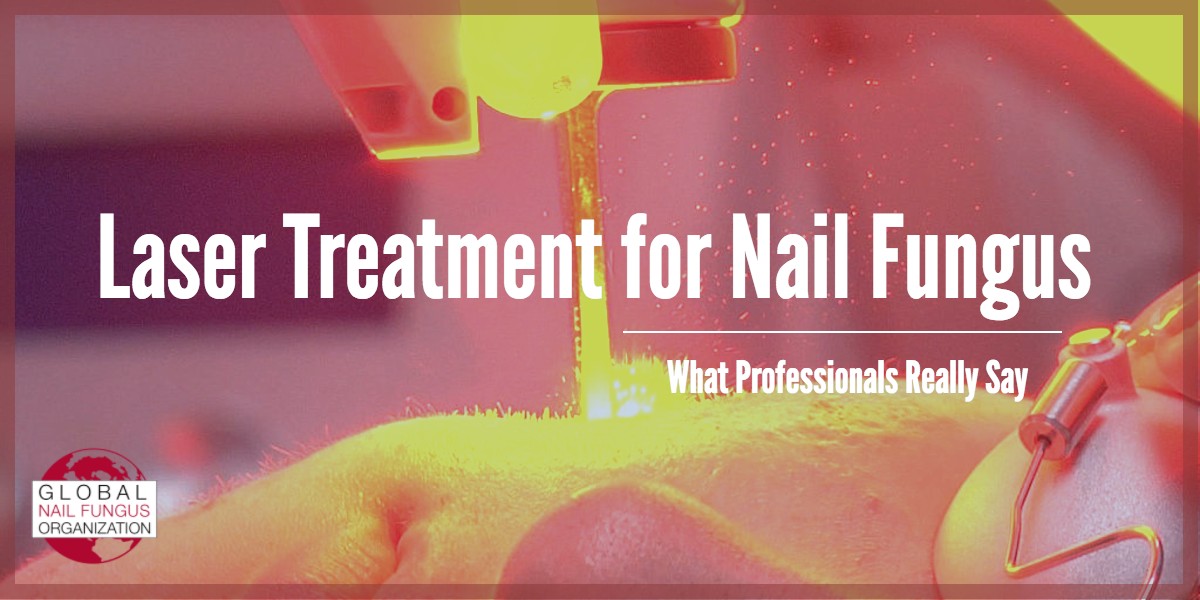 Laser Treatment for Nail Fungus – What Professionals Really Say
Laser Treatment for Nail Fungus – What Professionals Really Say
Table of Contents
Laser Procedures in Medicine
It was in 1962 when the first medical application of laser therapy was done by Leon Goldman. The first laser procedures were focused on cardiovascular surgeries, experimenting on atherosclerotic plaques and treatment of other cardiovascular diseases. From then on, laser therapy has been used in different fields of medicine. Laser therapy can treat diseases such as cancer and kidney stones as well as improve vision (laser eye surgery). Skin problems – warts, moles, birthmarks, sunspots, wrinkles, blemishes, and scars to name a few – can now be treated by laser therapy as well.
In terms of our nail problems, one of the promising technologies in treating Onychomycosis (nail fungus) is through laser treatment. Over the years, some dermatologists and podiatrists are starting to explore into laser treatment to cure this stubborn nail problem. Read along as we discover more about laser treatment for nail fungus and what the experts and professionals say about this advance treatment.
Mechanism Used in Nail Fungus Laser Treatment
Two laser mechanisms have emerged in recent years that have shown positive results when it comes to nail fungus treatment.
-
PinPointe Laser
The Pinpointe laser operates through the use of high energy radiation. With a single wavelength of light, fungus cells in the nail can specifically be destructed. The PinPointe laser light passes through the toenail without causing damage to the nail or its surrounding skin. This laser has a proprietary pulsed beam that significantly decreases the pathogens versus the healthy tissues, resulting in the inhibition of pathogen growth.
-
Neovon Laser by Nomir Medical Technologies
The Neovon Laser, on the other hand, uses an infrared light, which can cause the inactivation of fungus cells. This laser works with two very specific infrared wavelengths that have the capability to cause photo damage to microbes at physiological temperatures and kill them directly. Some sources have claimed that the Neovon laser appears to be more effective than the Pinpointe laser, but also suggested that further studies be conducted.
How Does Laser Technology Help Treat Nail Fungus?
The Pinpointe Laser and the Neovon Laser have the same principle when it comes to treating nail fungus. The lasers used by these machines emit high doses of light energy, which can cause fungus cell destruction. Often, laser treatment causes little to no damage to the nails or surrounding skin, therefore making it appealing to those inflicted with stubborn nail fungus problems.
Procedures in Nail Fungus Laser Treatment
Indication: When Is Laser Treatment Chosen?
Laser treatment for nail fungus infection is recommended for people experiencing severe onychomycosis (nail fungus). Severe onychomycosis is not only the most difficult stage to clear but is also the type with the highest risk of associated subungual ulceration, secondary bacterial infection and possible gangrene.
Procedure for Laser Treatment of Nail Fungus
-
A nail fungus laser works by focusing the laser in the infected nail.
-
The laser penetrates the nail and vaporizes fungus embedded in the nail bed and nail plate where the fungus may exist.
-
The laser that is targeting the fungus are turned into specific frequencies to affect the fungus cells responsible for the infection.
What Should You Do After Having A Laser Treatment Procedure?
One of the positive things about doing laser treatment for nail fungus is that there is no recovery time after the procedure. There will be no hassle in continuing your daily activities. Experts suggest that in order to provide the most effective treatment, it is recommended to couple laser therapy with topical antifungal medication for daily use so as to keep the nails healthy.
Results
The preliminary studies on nail fungus laser treatment still have varied results in terms of efficacy. According to these a few studies, the laser treatment method has promising effectiveness in treating moderate to severe nail fungus problems. One study has tested that carbon-dioxide therapy combined with antifungal topical solutions prove to be quite effective.
Side Effects
Since laser therapy for nail fungus infections is a new technology, only a few researches have been conducted. As of last year, no associated side effects were observed when using laser therapy in treating fungal infections. This is in contrast with the common oral medication where renal problems, loose bowel movements, skin breakouts, headaches and changes in taste were reported side effects of the drug.
Still, there is no 100% assurance for cure with the laser treatment and there is a possibility that nail fungus may recur. A contradictory study published by the Journal of American Academy of Dermatology found that even after 5 sessions, laser treatment produce little improvements with nail fungus.
What Do Professionals Really Say?
Dermatologists and experts are on either side of the spectrum with their opinions on laser therapy. Due to its aesthetic nature, insurance companies don’t really cover this very expensive procedure. One session alone can cost you up to a $1000. According to Dr. Bershow, who has published reports and reviewed the current research on laser treatment, “the studies have shown efficacy has been small, they haven’t been randomized controlled trials, and most of them have been funded by the actual laser companies themselves”. Stephen J. Kominsky, a podiatrist in Washington, supports the claim that laser treatment is yet to be branded as a cure. “With a cure, people think there is no chance for a recurrence. In this case, there is a chance”, says Kominsky.
Conclusion
Indeed, technology has advanced in the area of dermatology and podiatry. The new laser therapies in the market are innovative alternatives to treat nail fungus problems. However, with a new technology such as this, there is still a big room for research to support its efficacy and effectiveness in absolutely curing nail fungus. Albeit it’s very promising claims, the treatment itself is still very expensive and the risk of recurrence is still possible. To provide complete treatment, proper nail care together with the use proven and effective topical treatments may greatly improve and eliminate your woes with nail fungus. Visit Global Nail Fungus Organization to learn more about the proper nail care habits and recommended topical treatments as early as possible.






